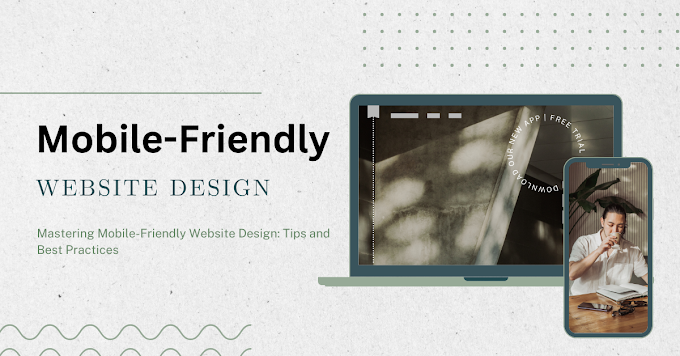Mastering Mobile-Friendly Website Design: Tips and Best Practices
Introduction
A brief overview of the importance of mobile-friendly design in the digital age. Statistics on growing mobile usage and impact on web traffic.
Section 1: Understanding Mobile-Friendly Design
Definition and Importance
Explain what mobile-friendly design is and why it’s important. Explain how mobile-friendly websites enhance user experience and boost SEO.
Responsive Web Design (RWD)
Introduce the concept of an automated system. Explain how RWD allows websites to adapt to different screen sizes.
Section 2: Key Principles of Mobile-Friendly Design
Mobile-First Approach: Discuss mobile-first design philosophy. Explain the benefits of configuring mobile devices before scaling up to larger screens.
Content Prioritization: Emphasize the importance of prioritizing mobile users. Discuss techniques such as content hierarchy and concise transcription.
Touch-Friendly Navigation: Explain the importance of easy-to-touch materials. Discuss best practices for buttons, menus, and interactive elements.
Section 3: Technical Implementation
Responsive Layouts: Provide advice on creating a fluid and flexible design. Discuss the use of media queries in CSS for response styling.
Image Optimization: Explain the importance of image quality for mobile devices. Discuss techniques like responsive images and lazy portability.
Mobile-Friendly Typography: Discuss the importance of text that can be read on a small screen. Discuss font size, line spacing, and mobile-friendly font choices.
Section 4: Testing and Optimization
Cross-Browser and Cross-Device Testing: Emphasize the need for thorough testing across devices and browsers. Recommend tools and methods for testing mobile responsiveness.
Performance Optimization: Discuss techniques for optimizing website performance on mobile devices. Cover things like miniaturization, compression, and storage.
Section 5: Tools and Resources
Mobile-Friendly Design Tools: Use tools to help design and test mobile responsiveness. Include design tools and test systems.
Learning Resources: Provide links to advanced readings, courses, and communities focused on mobile-friendly design.
Conclusion
Summarize the main points. Reinforce the importance of mobile-friendly design to ensure smooth browsing.
Call to Action
Encourage readers to apply what they’ve learned and share your mobile-friendly websites. Invite their comments and questions for future articles.
Remember to use clear and concise language, include visuals where necessary, and provide practical examples to enhance the learning experience for your audience is very interested. Good luck with your website and educational efforts!
FAQ
Q: Why is mobile-friendly design important for a website?
A: Mobile-friendly design ensures a seamless user experience on smartphones and tablets, improving accessibility and usability. It also positively impacts search engine rankings, as Google prioritizes mobile-friendly websites.
Q: What is the difference between responsive design and mobile-friendly design?
A: Responsive design is a comprehensive approach that adapts website layout to different screen sizes, including desktops. Considering touch interfaces and smaller screens, mobile-friendly design focuses primarily on optimizing the user experience of mobile devices.
Q: How can I test if my website is mobile-friendly?
A: Use Google’s Mobile-Friendly Test tool to test your website’s performance. Run manual tests on different devices or use browser developer tools to simulate different screen sizes.
Q: Are there specific design considerations for mobile-friendly typography?
A: Yes, prioritize readability by choosing legible fonts and maintaining proper font size. Ensure proper line spacing and avoid long paragraphs. Test your typography on different devices for a comfortable reading experience.
Q: Can I retrofit an existing website to be mobile-friendly?
A: Yes, you can. Apply responsive design principles by updating your CSS with media queries, optimizing small screen images, and rethinking layouts. However, depending on the complexity of your website, you may need to redesign it to get the best results.
FOR MORE TIPS ON Web Development VISIT OUR WEBSITE Ustudy








